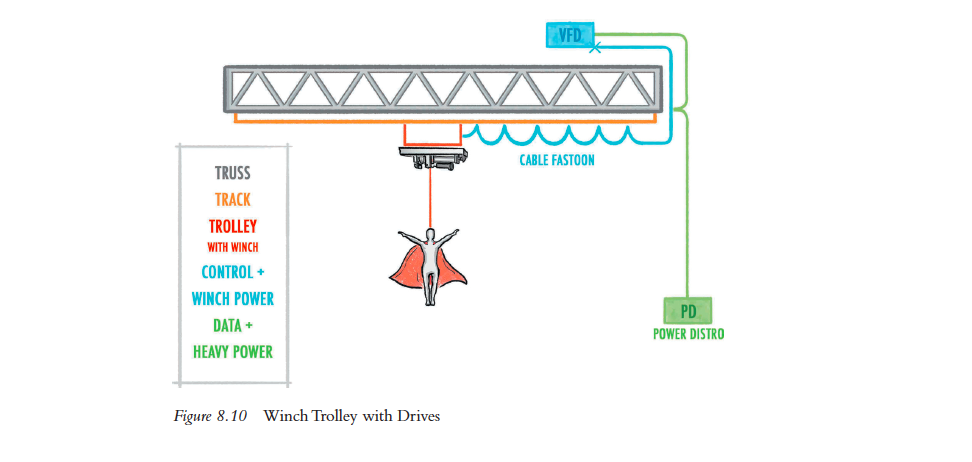Automated Performer Flying: The State of the Art, written by Jim Shumway, shares the secrets of performer flying in entertainment history, and provides step-by-step instructions on how to create a performer flying effect from scratch. It sheds light on all aspects of performer flying, covering its history, explaining concepts like mechanical compensation versus electrical compensation, providing guidance on how to calculate stopping distances and forces, and sharing tips on how to build successful relationships with performers. Case studies of prominent productions featuring performer flying, including Cirque du Soleil and Beyoncé, are included throughout.
Written for technical directors, theatrical riggers, and students of rigging, technical direction, and stagecraft courses, Automated Performer Flying takes readers through the process of creating a performer flying effect from the first spark of the idea to opening night.
Jim Shumway is a senior project manager at TAIT, where he consults on and executes the most advanced performing flying effects in the world. Prior to joining the TAIT team, Shumway travelled the world with Cirque du Soleil for five years on four shows, working on two creations and reaching the role of Head Rigger. He is an annual guest lecturer at Yale University's School of Drama, speaking on Performer Flying and Acrobatic Rigging. He is one of the expert instructors at LDI2019: Rigging for Aerial Acrobatics and Performer Flying.

Excerpt from Automated Performer Flying: The State of the Art
We can easily add more lifting capacity in the form of stronger, more, or both chain motors but the facility impact to every venue you are going to must also be considered. It doesn’t matter that you have 20 tons of lifting capacity if the venue can only hold 10! Having the lifting axis up in the air can also complicate some rescue plans.
In the case of a brake release rescue (which we will cover more in Chapter 12) having to climb up onto the track and scurry down to the winch will always be more involved than simply walking over to winch in the backstage.
Lastly, but also important to consider, is the fact that if the electromechanical machine is to move back and forth across the track, you will need a way to get the electro to the mechanical. Figure 8.9 shows one way to achieve this, that being simply festooning cable behind the trolley on the track. You could alternatively design a busbar system into your track to deliver the power and control signals to your machine. This solution is not recommended for touring applications however, and it can really complicate the mechanical design of your trolley if you are unfamiliar with this concept’s common parts.